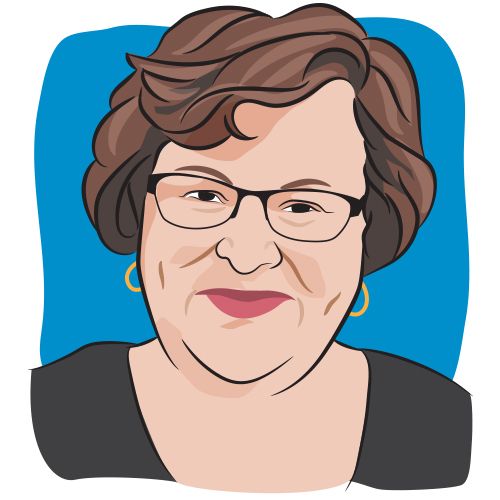Blog
Article
Fluoroscopes, Tooth X-rays and Modern Cancer Radiation Treatments
Author(s):
My mom kept me safe from everything, until cancer showed her she couldn’t.

It’s 1968, and I’m five-years-old. My mom and I are shoe shopping at Hodge’s Shoes. I can’t decide what is more fascinating – the pair of red leather Mary Janes or the monkey in a cage along the back wall. The chattering brown monkey is a marketing ploy of the store; he brings in customers. Jo the monkey is eating bananas. Suddenly, he lets out a scream and shows his teeth in an ugly smile. OK, the monkey wins. I put down the Mary Jane shoes and edge near the cage.
Next to Jo’s cage is a wooden box, another thing that brings in customers; I would later come to know that this contraption is called a fluoroscope, but at that time, it was just a fun toy to stand on and see the bones of my feet through my shoes. These devices were popular from the 1930s to the 1970s in United States shoe stores. They were later done away with because they were dangerous, letting off radiation to the user and to the salesman who employed them to measure people’s feet and fit new shoes for them.
“Get off that thing,” my mother said loudly. Mom was a science teacher and understood the danger of too much radiation.
I’d hop off and turn again to Jo, who was then swinging from a little swing.
Mom was so leery of radiation that she didn’t allow the dentist to x-ray our teeth. Consequently, as a child, I never had an x-ray of my face, and my mouth was full of cavities.
I escaped radiation pretty much throughout my childhood. I did have x-rays of broken bones, my ankle and my wrist, but that was minimal compared to the radiation I’d endure as an adult.
It’s 2011. Breast cancer in my right breast demands radiation treatment – weeks of it. The radiation burns my skin a bright pink until the dermis flakes off in layers. I somehow know that this is too much radiation, but who would believe me, the patient?
Mom doesn’t try to stop the treatments. We believe in this kind of radiation, the “necessary” kind to cure cancer.
Things are fine for a few years until a secondary cancer arrives.
2016. The rash appears suddenly.It’s a bright strawberry red color, splotchy. I ignore it for a week or so. But something tells me to see my radiologist.
“Angiosarcoma,” he says.“ You’re one in a million.” Like this is supposed to be funny.“ The radiation treatment you had for your cancer a few years back caused this one. Talk to your oncologist.” I feel a mild rage toward this man, the one who supervised the radiation treatment. Yes, I know I did sign a paper saying that I knew that this might happen, but I can’t help but think I got an overdose of radiation.
I see my oncologist.“ The radiologist says it’s angiosarcoma.” I can see her wince when I say the A-word. Because of this, I know that I’m in deep trouble. My oncologist never winces.“ That’s the problem with you, Laura. You’re never boring.”
This was my doctor’s way of saying that my cancer cases were complicated. Cancer doctors love to make jokes. The joke is on us.
Shoe stores don’t have monkeys anymore, nor do they have fluoroscope machines. Both are extreme liabilities, but I remember the innocent old days.
My cancer surgeon and my plastic surgeon perform the operation that removes the angiosarcoma. It’s a heck of a procedure. I must lie on my side for three weeks because my breast and back have been cut into.
I survive, but I do learn a lesson. Fluoroscopes and x-rays are one thing, but there are some things a mother can’t protect you from, and sometimes it’s modern medicine.
For more news on cancer updates, research and education, don’t forget to subscribe to CURE®’s newsletters here.



